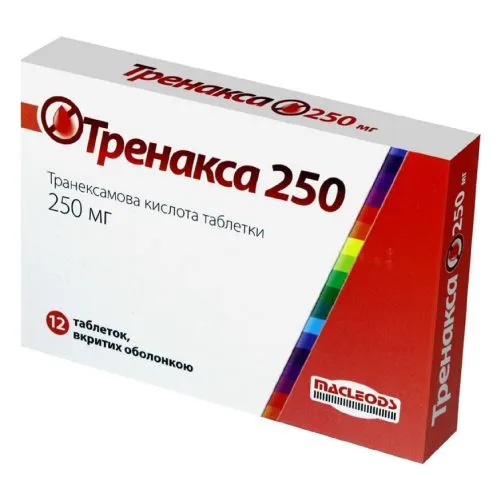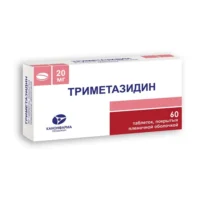Description
Trenaxa 250 (Tranexamic Acid) Coated Tablets 250 mg. №12
Ingredients
- Active ingredient: Each coated tablet contains 250 mg of Tranexamic Acid.
Dosage
- Dosage: The usual dosage of Trenaxa 250 is 500 mg to 1500 mg daily in divided doses.
Indications
- Indications: Trenaxa 250 is indicated for the treatment of heavy menstrual bleeding, short-term management of hemorrhage, and prevention of excessive bleeding during surgery.
Contraindications
- Contraindications: Do not use Trenaxa 250 in patients with a history of hypersensitivity to tranexamic acid, subarachnoid hemorrhage, and color vision disturbances.
Directions
- Directions: Swallow the tablets whole with a glass of water. Do not crush or chew the tablets.
Scientific Evidence
- Tranexamic acid, the active ingredient in Trenaxa 250, works by inhibiting the breakdown of blood clots, thereby reducing bleeding. Studies have shown its efficacy in reducing blood loss during surgery and in treating heavy menstrual bleeding. Research in the Journal of Thrombosis and Haemostasis supports the effectiveness of tranexamic acid in various clinical settings.
Additional Information
- It is important to note that Trenaxa 250 should be used with caution in patients with a history of thromboembolic events. Consult a healthcare professional before using this medication, especially if you are pregnant or breastfeeding.
Pharmacological Effects
- Tranexamic acid exerts its effects by inhibiting the activation of plasminogen to plasmin, which helps in maintaining hemostasis and reducing excessive bleeding. This mechanism of action makes it valuable in clinical scenarios where controlling bleeding is crucial.
Clinical Trials and Comparative Effectiveness
- Clinical trials have shown the efficacy of tranexamic acid in trauma, surgery, and menorrhagia. Comparative studies indicate its effectiveness compared to other antifibrinolytic agents with a more favorable side effect profile. Research by Morrison et al. (2018) emphasized its benefits in reducing blood loss and transfusion requirements in surgical patients.




